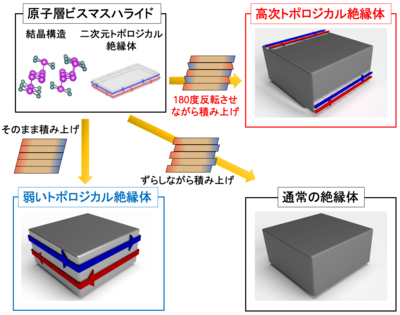Share this
Authors
Ryo Noguchi, Masaru Kobayashi, Zhanzhi Jiang, Kenta Kuroda, Takanari Takahashi, Zifan Xu, Daehun Lee, Motoaki Hirayama, Masayuki Ochi, Tetsuroh Shirasawa, Peng Zhang, Chun Lin, Cédric Bareille, Shunsuke Sakuragi, Hiroaki Tanaka, So Kunisada, Kifu Kurokawa, Koichiro Yaji, Ayumi Harasawa, Viktor Kandyba, Alessio Giampietri, Alexei Barinov, Timur K. Kim, Cephise Cacho, Makoto Hashimoto, Donghui Lu, Shik Shin, Ryotaro Arita, Keji Lai, Takao Sasagawa, and Takeshi Kondo
Abstract
Low-dimensional van der Waals materials have been extensively studied as a platform with which to generate quantum effects. Advancing this research, topological quantum materials with van der Waals structures are currently receiving a great deal of attention. Here, we use the concept of designing topological materials by the van der Waals stacking of quantum spin Hall insulators. Most interestingly, we find that a slight shift of inversion centre in the unit cell caused by a modification of stacking induces a transition from a trivial insulator to a higher-order topological insulator. Based on this, we present angle-resolved photoemission spectroscopy results showing that the real three-dimensional material Bi4Br4 is a higher-order topological insulator. Our demonstration that various topological states can be selected by stacking chains differently, combined with the advantages of van der Waals materials, offers a playground for engineering topologically non-trivial edge states towards future spintronics applications.
Nature Materials : https://www.nature.com/articles/s41563-020-00871-7
These Related Stories